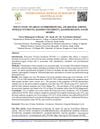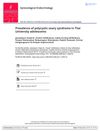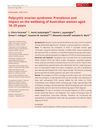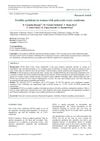A Simple Assessing Method for Screening Prevalence of Polycystic Ovary Syndrome and Emotional Distress in Female Students at Northern Border University in Saudi Arabia
January 2020
in “
International Journal of Medical Research and Health Sciences
”
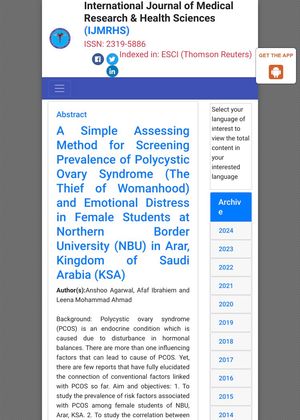
TLDR Many female students at Northern Border University in Saudi Arabia may have Polycystic ovary syndrome (PCOS) and related emotional distress, so those at risk should get further tests and treatment.
The study aimed to assess the prevalence of risk factors associated with Polycystic ovary syndrome (PCOS) and the correlation between emotional distress and these risk factors among female students at Northern Border University in Saudi Arabia. The researchers used a pre-validated self-structured questionnaire to collect data from students who were willing to participate. The students were divided into two groups: those with PCOS and those without, based on the National Institutes of Health Criteria. This criteria diagnoses PCOS based on the incidence of chronic anovulation, characterized by vaginal bleeding for more than 35 days gaps or 8 cycles/year, and clinical hyperandrogenism, defined as the occurrence of acne, androgenic alopecia, acanthosis, and hirsutism. The study concluded that students identified with risk factors for PCOS were advised to undergo complete investigations, including radiological and hormonal assays, to confirm the diagnosis and begin treatment.


